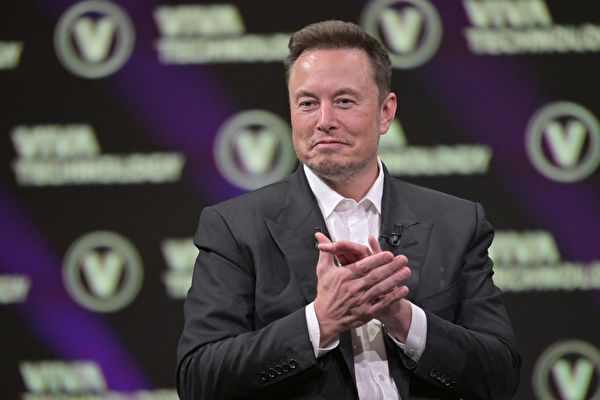Elon Musk’s revolutionary impact extends beyond the realms of global automotive and space industries, as he reshapes the compensation schemes of top corporate executives. An increasing number of high-ranking executives are now commanding annual salaries exceeding $50 million, with the potential for further growth over time.
According to a report by The Wall Street Journal on Monday, Musk’s multi-billion-dollar compensation plan, initiated in 2018 and despite facing rejection by a Delaware court in January, has set a precedent for other exorbitant compensation packages. Since then, more and more corporate executives have been receiving substantial pay packages, with their remuneration seeing an upward trajectory.
Brian Bueno, the head of New York compensation consulting firm Farient Advisors, described this phenomenon as a “moonshot award,” a substantial incentive tied to achieving corporate goals which allows executives to earn significant rewards upon successful accomplishment.
Starting in 2018, Musk demanded his compensation to be linked to the company’s market capitalization and financial objectives, resulting in his compensation reaching at least $1.4 billion on paper last year.
Data from public data provider MyLogIQ revealed that in 2023, the highest stock-based salary increase among CEOs in the United States was Musk’s, amounting to a staggering $14.03 billion.
Since 2018, Musk has not received any new stock awards or bonuses from Tesla; his $1.4 billion earnings in 2023 stemmed from the increase in value of stock options granted by the company that year.
Tesla’s securities filing indicated that stock compensation earnings over the past three years have surged by $48 billion. However, the company’s stock price has dropped nearly 30% so far this year, hovering around $177, which has eroded the value of stock options.
In January, a Delaware court revoked the compensation plan granting Musk those stock options, though a final judgment is pending. Tesla reported at the end of April that as of the end of March, Musk had not exercised his options. The company plans to appeal and seek shareholder approval to reward Musk for the successes he has led the company to achieve since 2018.
While other companies’ super-sized compensation packages might not reach the same heights, more and more chief executives are securing lucrative pay packages. An analysis by The Wall Street Journal of publicly listed companies and data from MyLogIQ revealed that over the past five years, more than thirty CEOs of Fortune 500 companies have received compensation valued at $50 million or higher, compared to only nine in the five years before Musk’s rise.
Furthermore, the total cost of these salary benefits has been rapidly escalating, doubling over the past five years, as discovered by The Wall Street Journal’s analysis, which encompassed over 400 CEOs of S&P 500 companies who have been in their roles for at least a year, reporting their compensation from June 30, 2023, to mid-May of this year. Another analysis by MyLogIQ also indicated an increase in such compensation packages.
Last year, the seven highest-paid CEOs in the S&P 500 index all received these bonuses, with two of them earning over $150 million. Broadcom Inc.’s CEO, Hock Tan, raked in $162 million, while Palo Alto Networks’ CEO Nikesh Arora pocketed $151 million.
Prior to Musk’s massive salary plan in 2018, only one CEO in the S&P 500 index crossed the $150 million mark in compensation in the five years preceding. Yet, in the five years following Musk’s revolution, nine individuals joined the elite club of super-compensated CEOs.
Broadcom stated that under Tan’s leadership since 2006, the company has outperformed its competitors. In its securities filing, Broadcom noted that Tan must remain in office for five years, and the company’s stock price must meet certain targets after October 2025 for his stock rewards to vest. The company anticipates no additional stock awards or cash dividends for him within five years.
In a securities filing, Palo Alto Networks revealed that Arora’s compensation includes the value of stock awards granted within three years.
Reports indicate that substantial compensation has also found its way to lower-level executives or CEOs outside the S&P 500 index, including several private equity firms.
Jon Winkelried, CEO of private equity management company TPG, earned a total compensation of $199 million, including $185 million in stocks, which will vest over four to five years as an incentive for enhancing the company’s value. TPG’s securities filing outlined Winkelried’s eligibility for a 60% reward if the company’s stock price surges by 50% to 100% from its level at the end of November.
Similarly, Carlyle Group, outside the S&P 500 index, reported that CEO Harvey Schwartz’s total compensation amounted to $187 million, which included $180 million in stock he received upon assuming office in February 2023. As of December 31 last year, Carlyle valued the reward at $229 million, incorporating the $22 million vested that year. Should Carlyle’s stock price, currently around $42, reach the threshold of $71.80 by 2028, Schwartz will claim the majority of the remaining stock awards.
Last year, Blackstone’s total return rate was approximately 83%, outperforming other U.S. asset management companies, as its compensation structure aligns the incentives for top executives with those of investors, maintaining consistency.
Such massive compensation packages often comprise restricted stock or stock options. The final amount of stocks or options acquired by top executives depends on stock prices, financial achievements, or operational performance objectives being met.
It should be noted that figures reported reflect the value at the time of stock issuance, which may significantly underestimate the potential growth of these stocks. Of course, there is also the possibility of overestimating the stock’s value, leading to minimal actual returns, if any.

